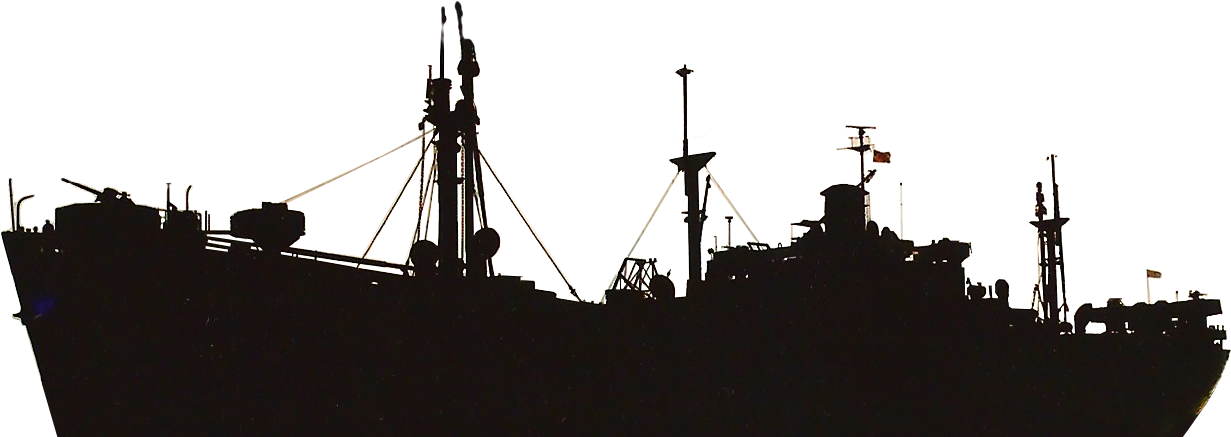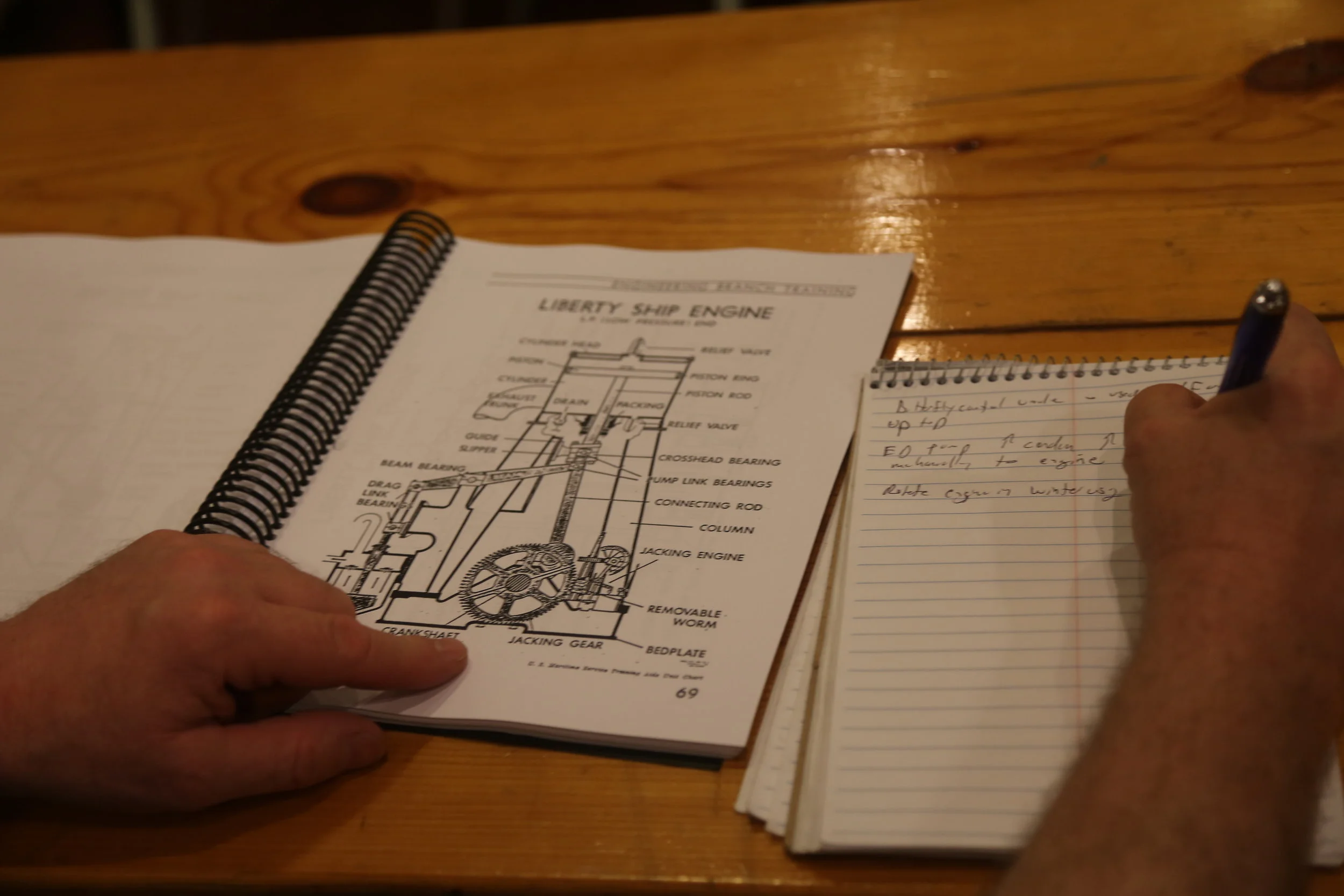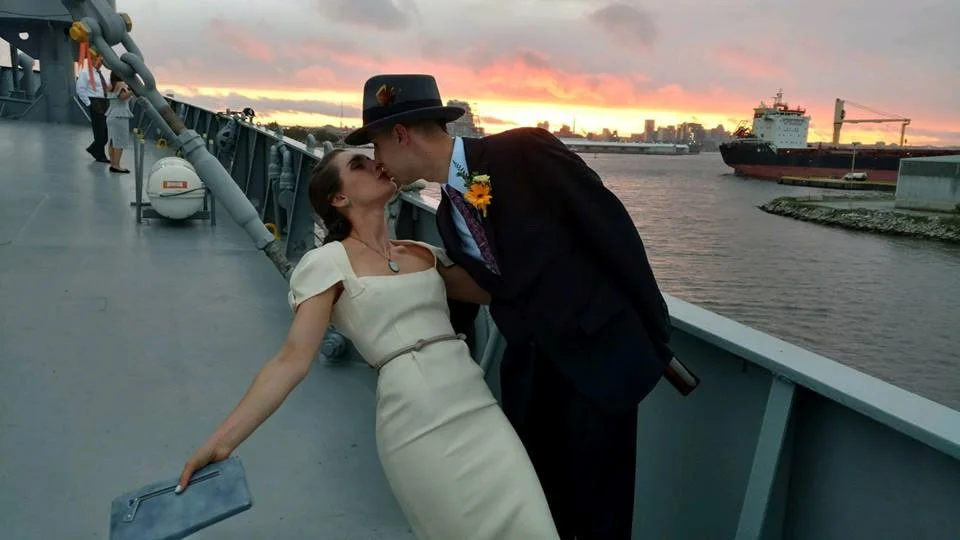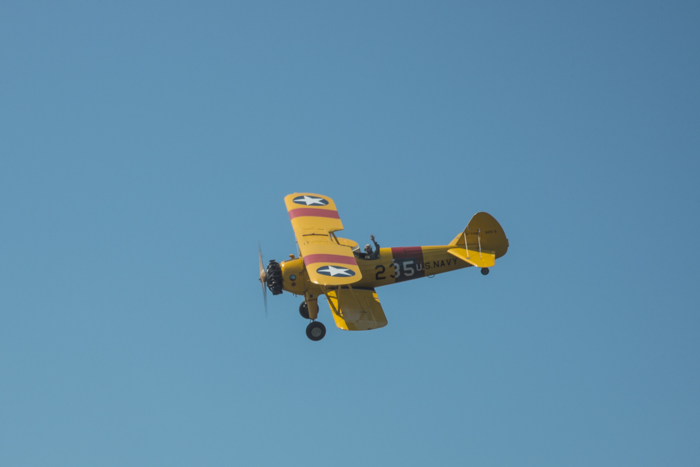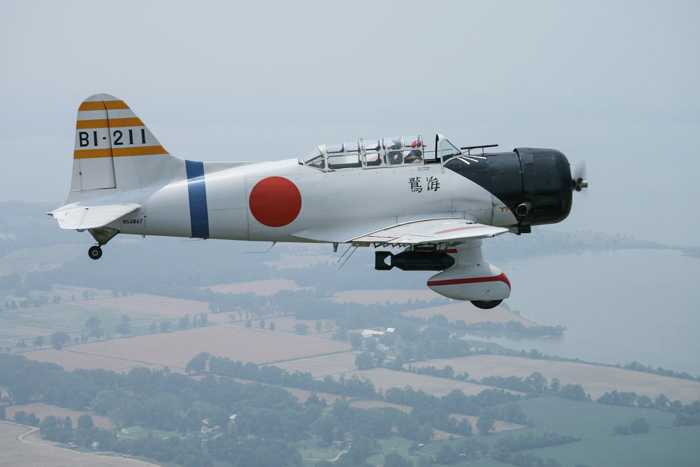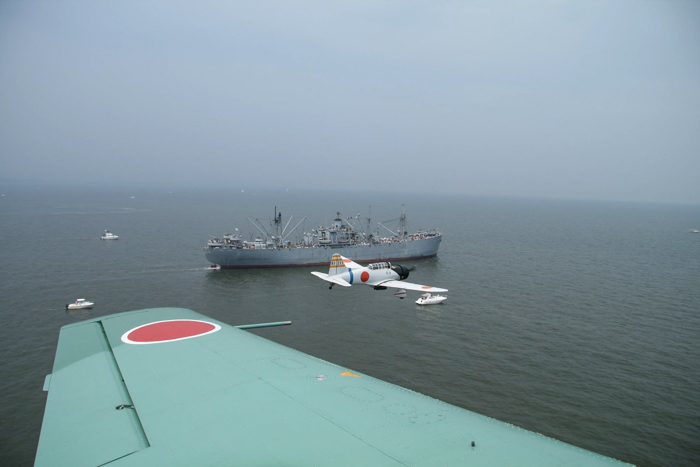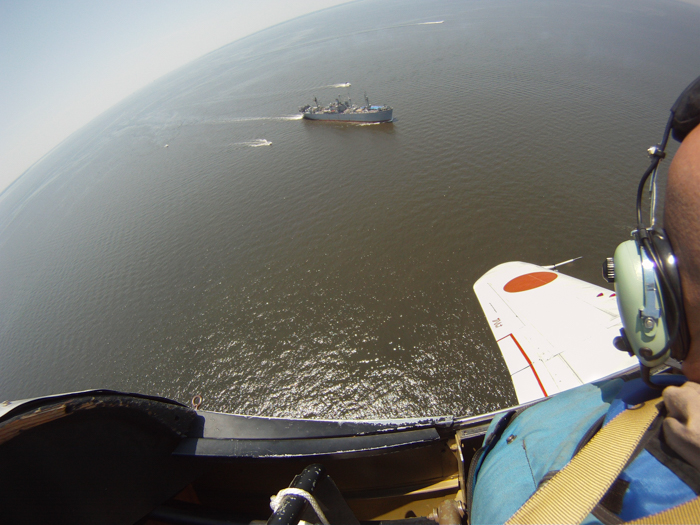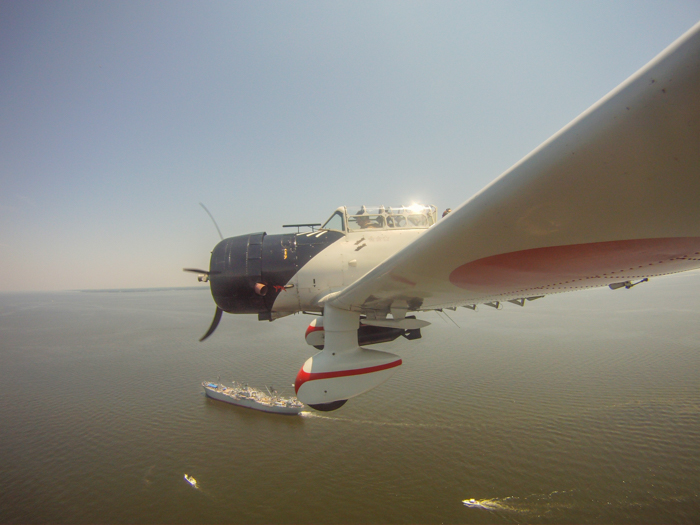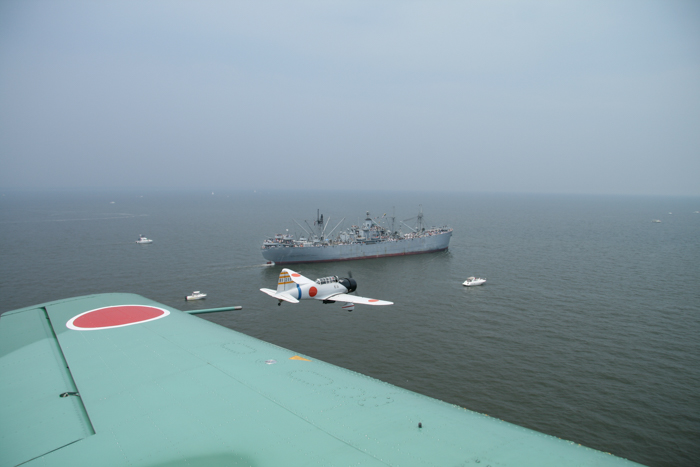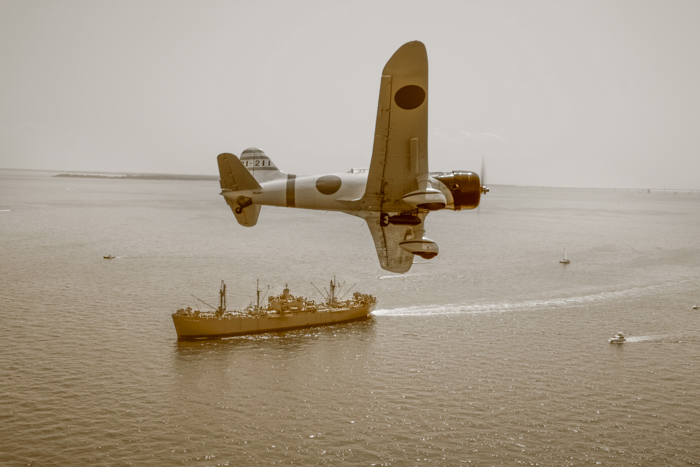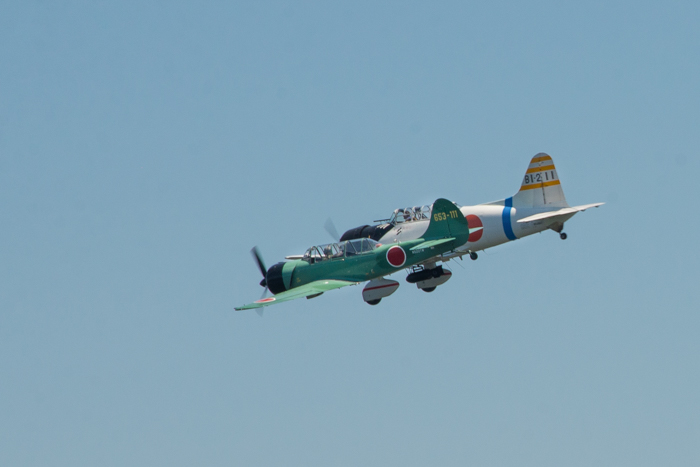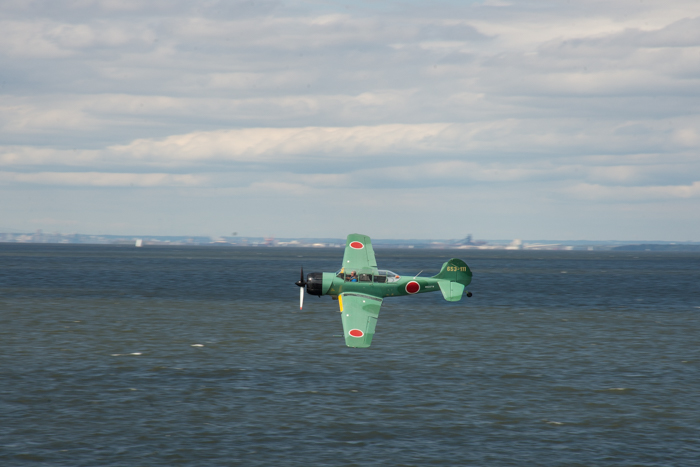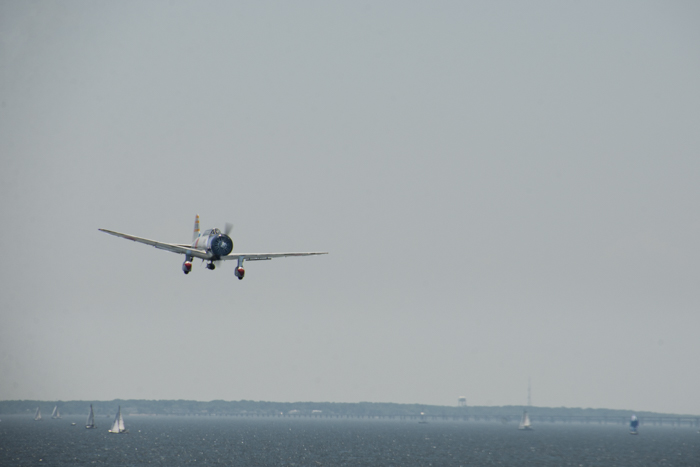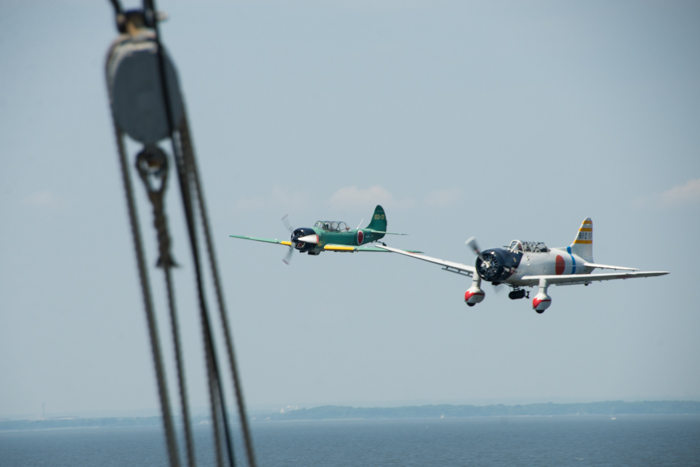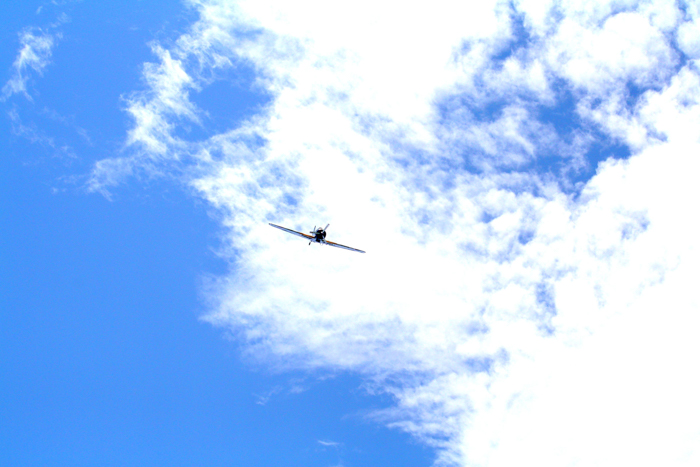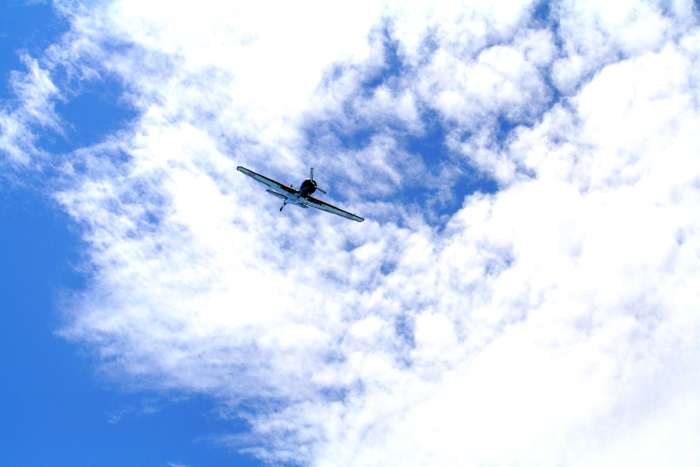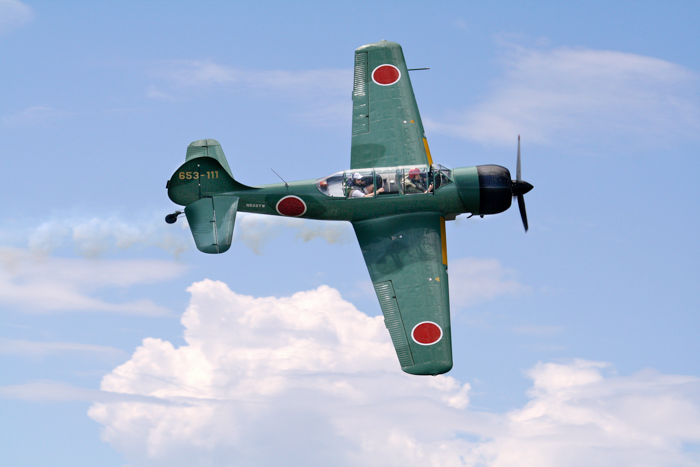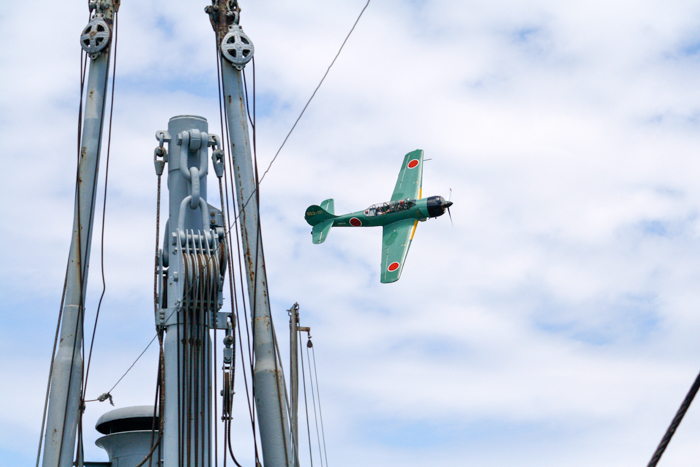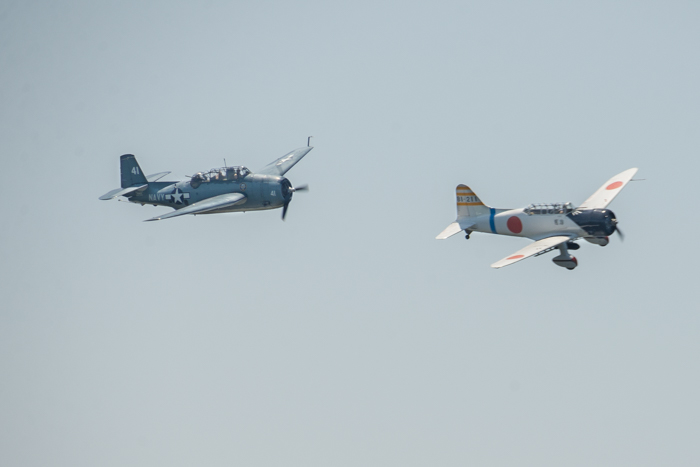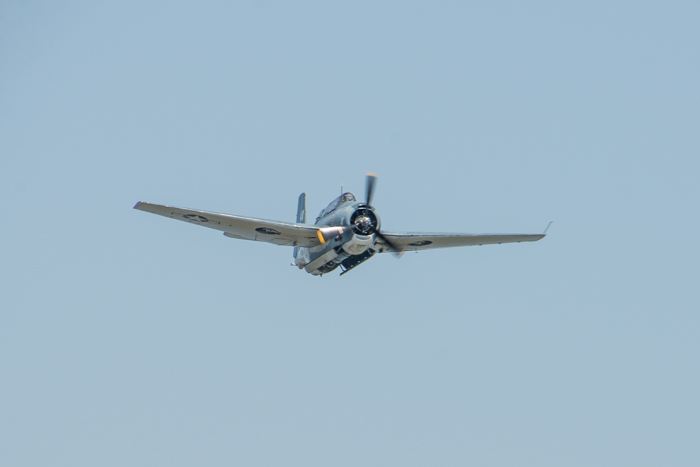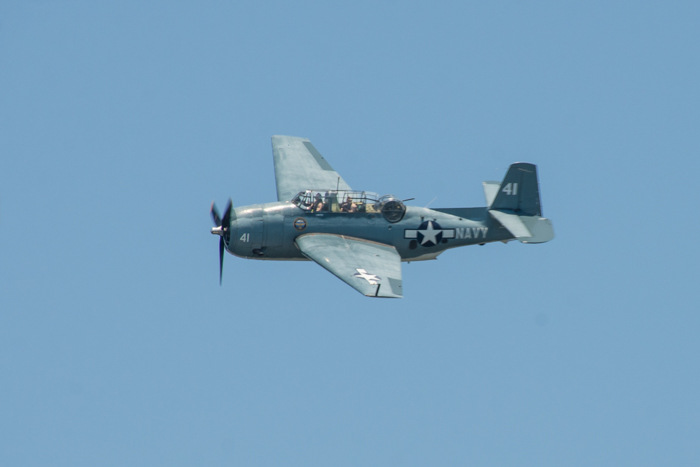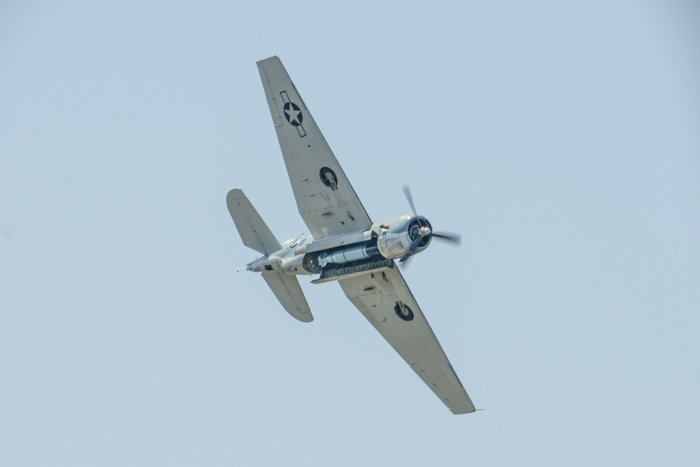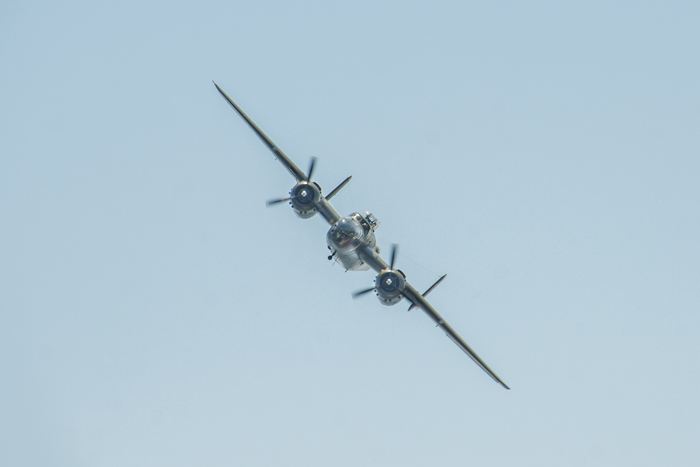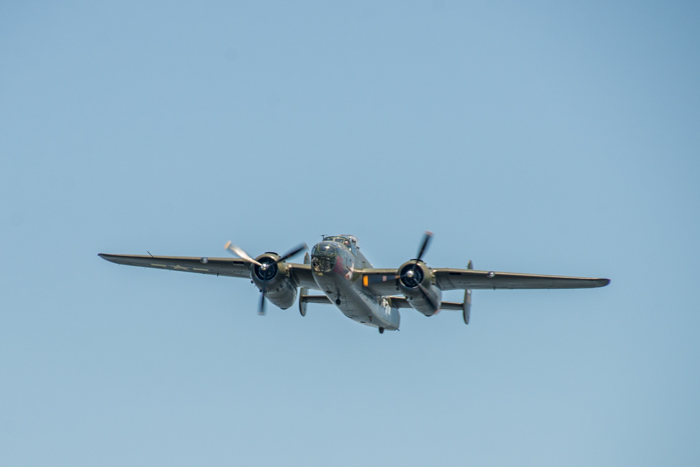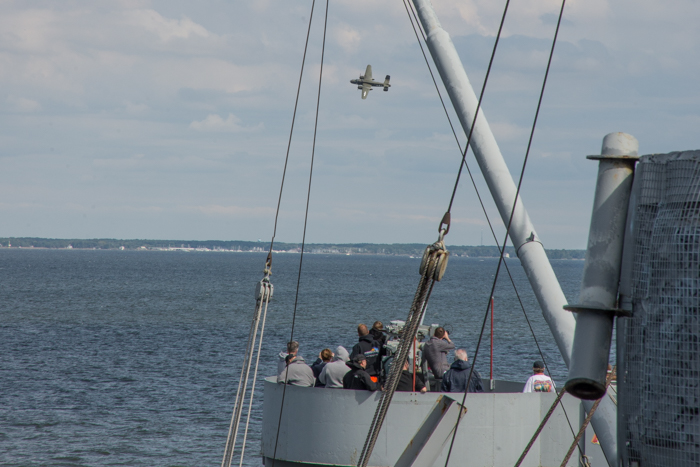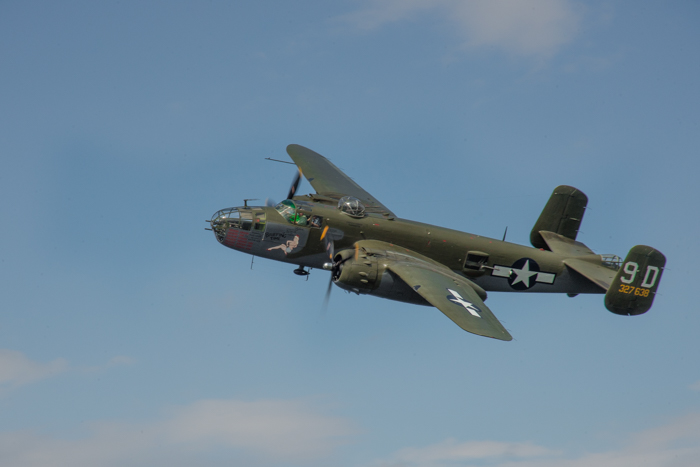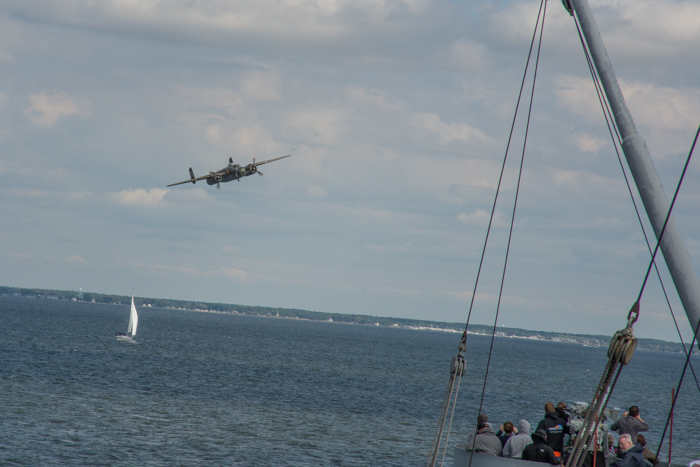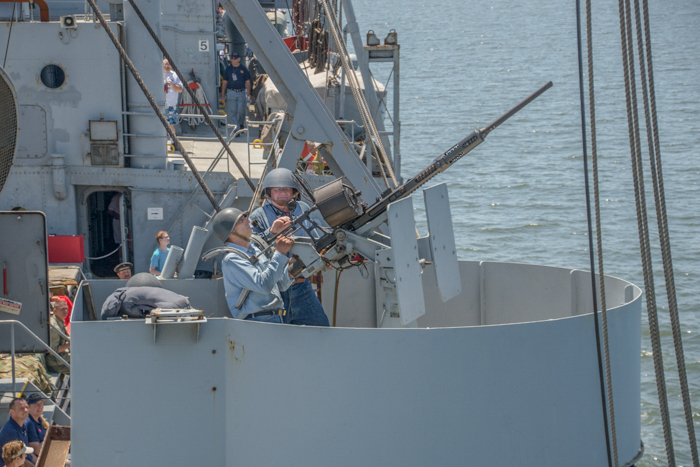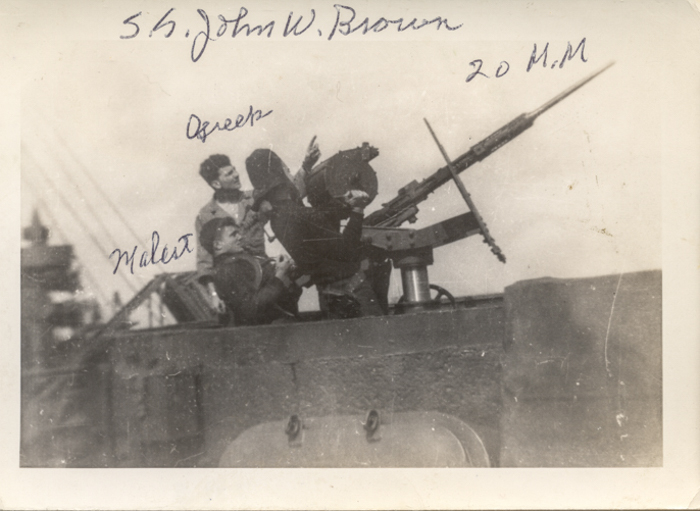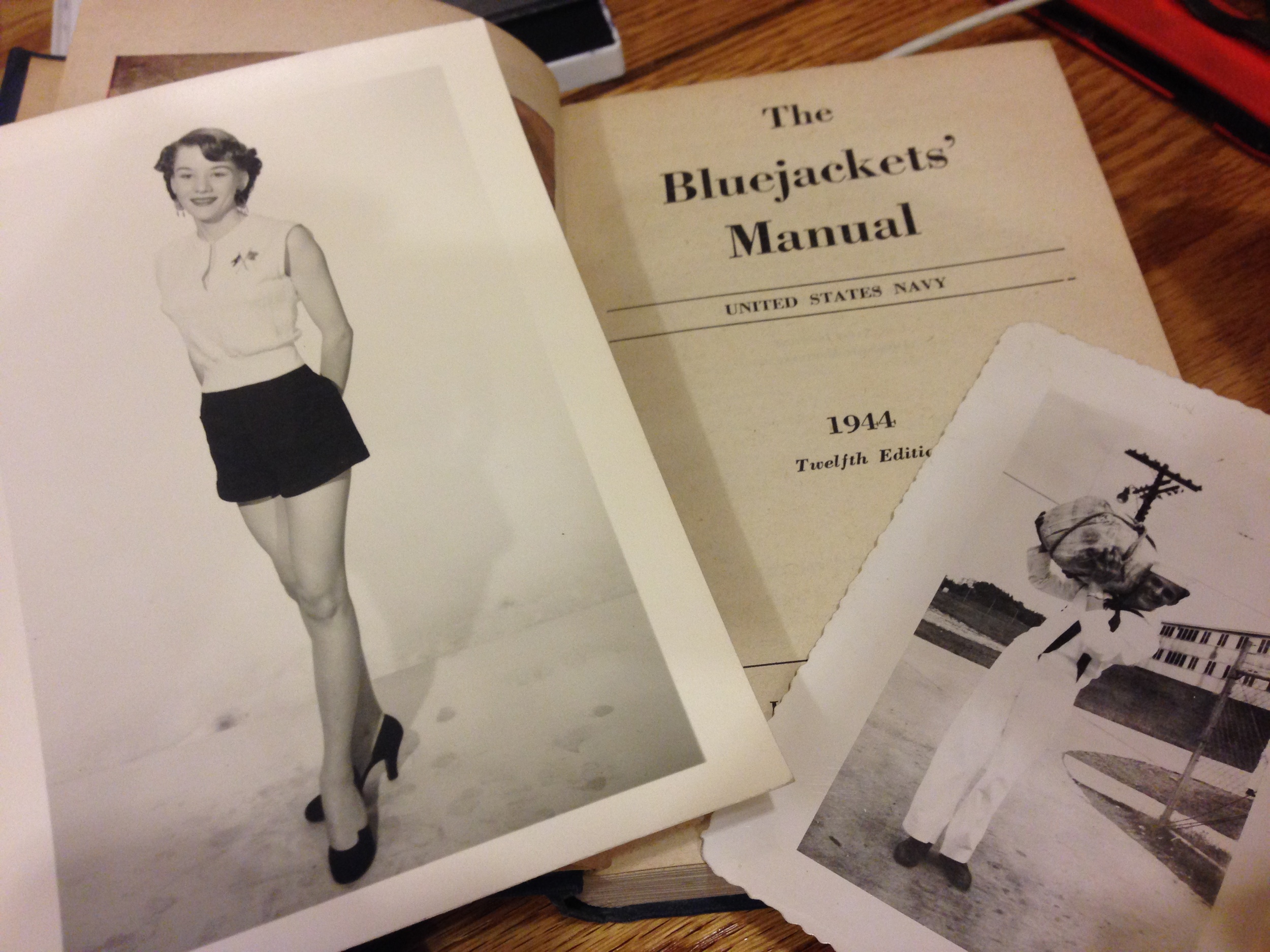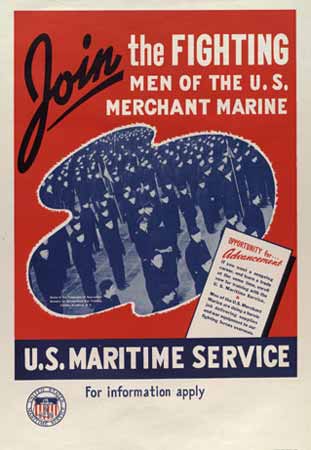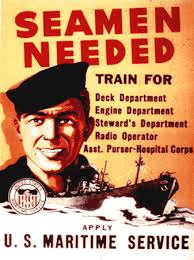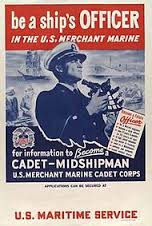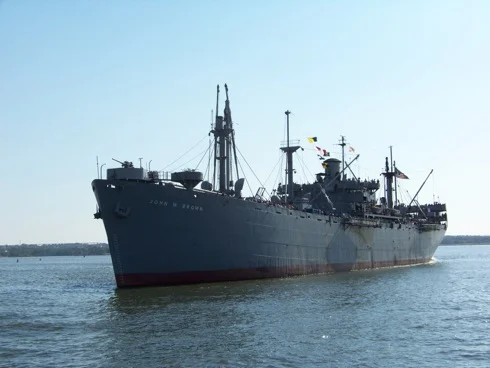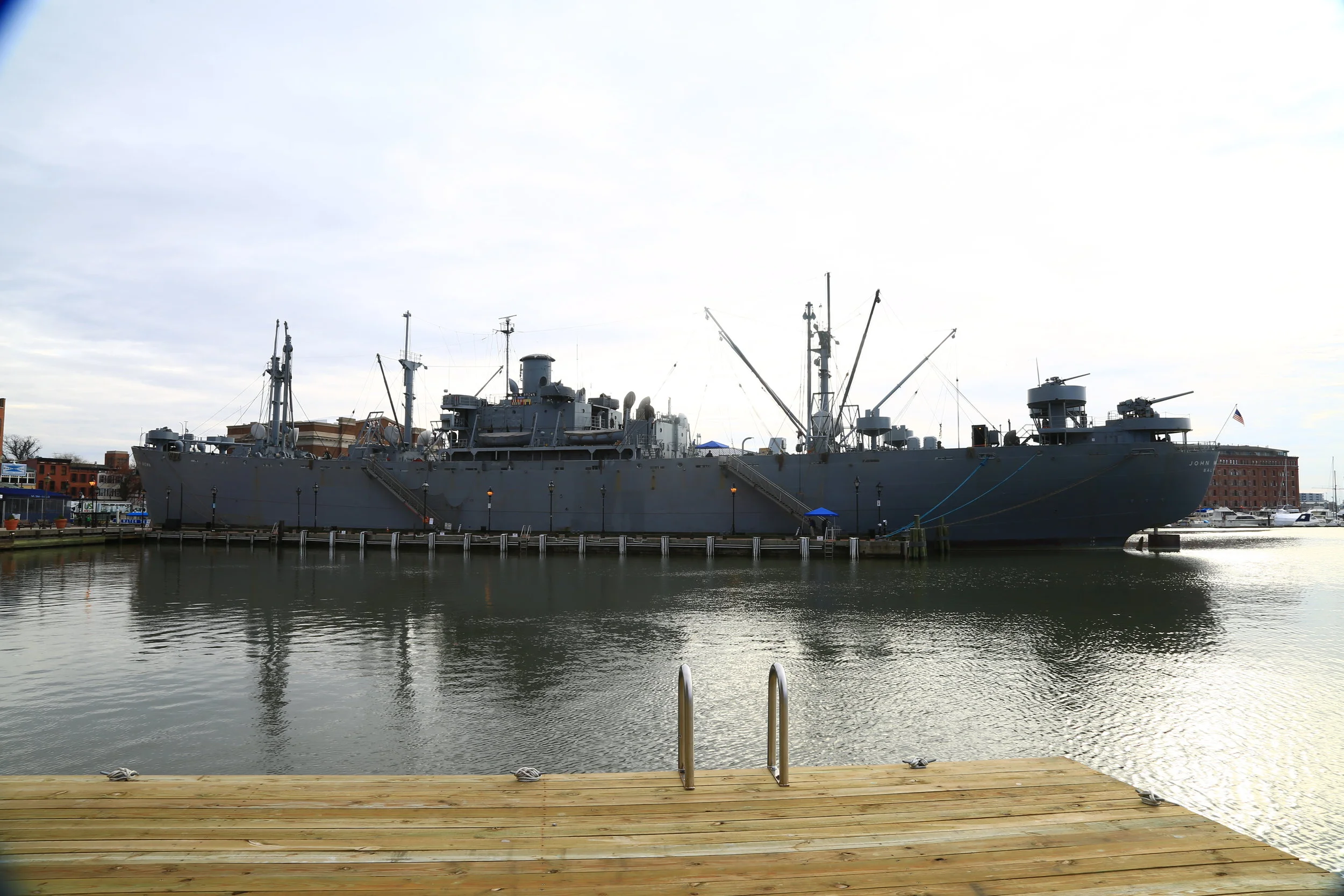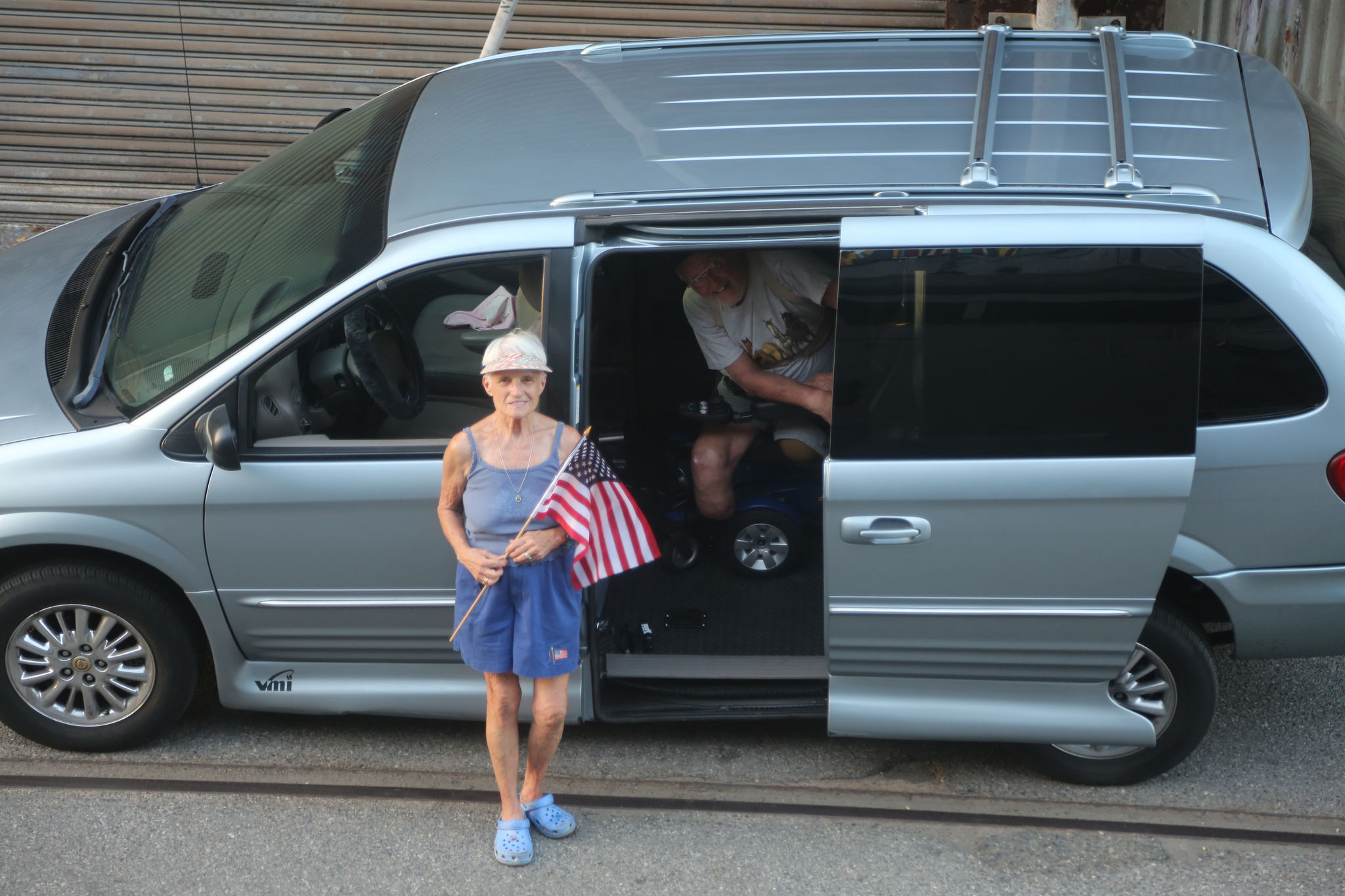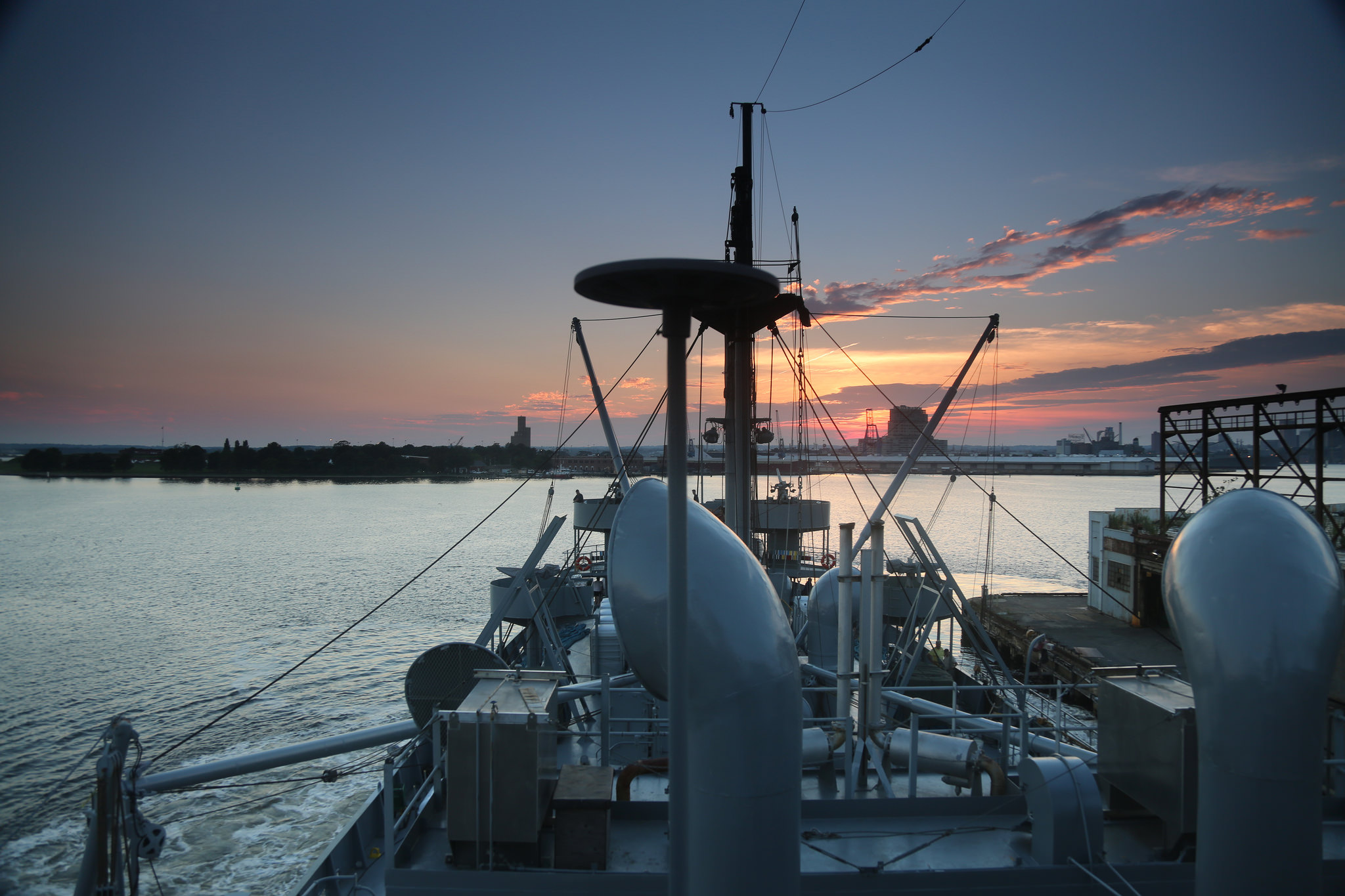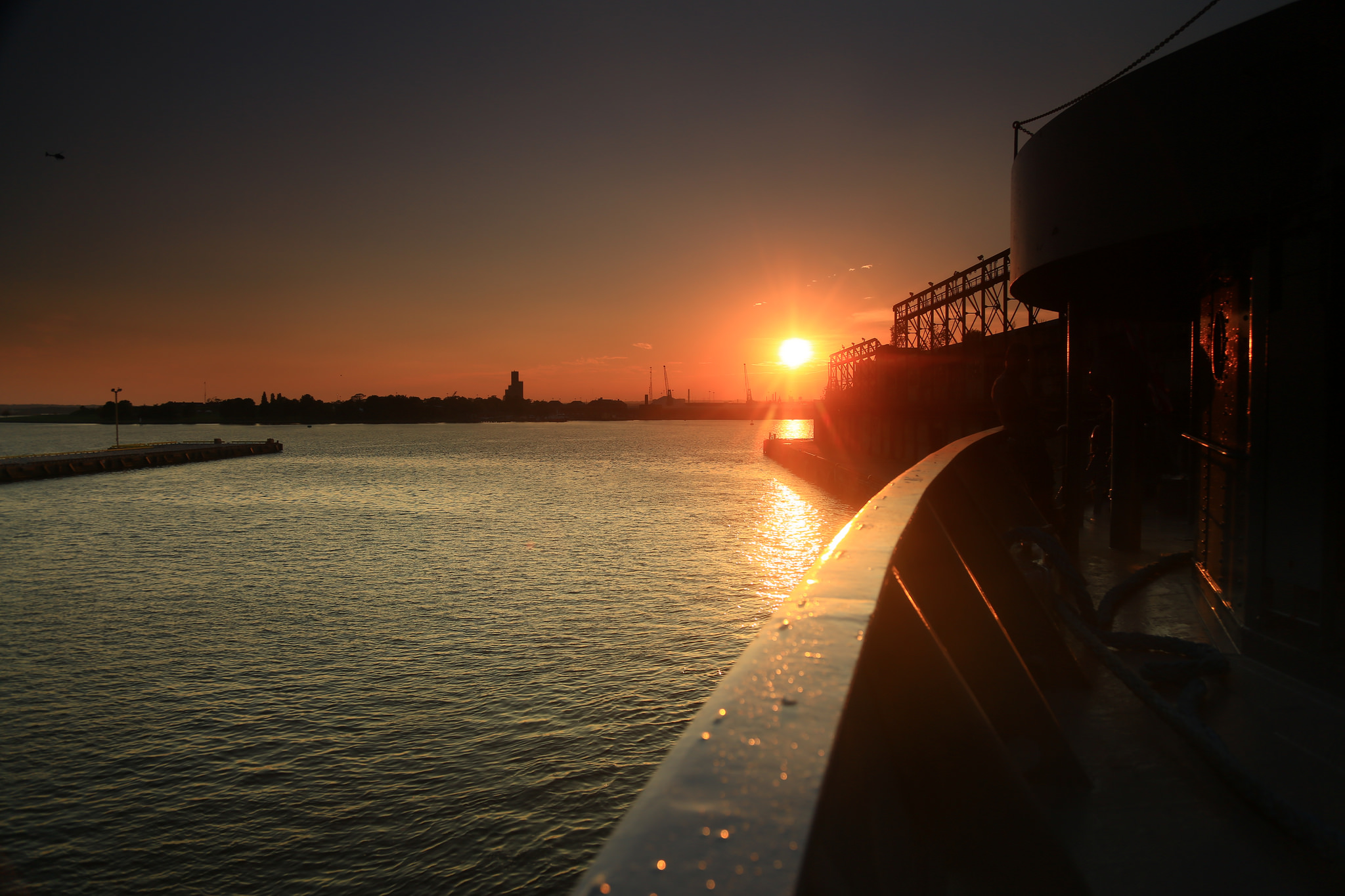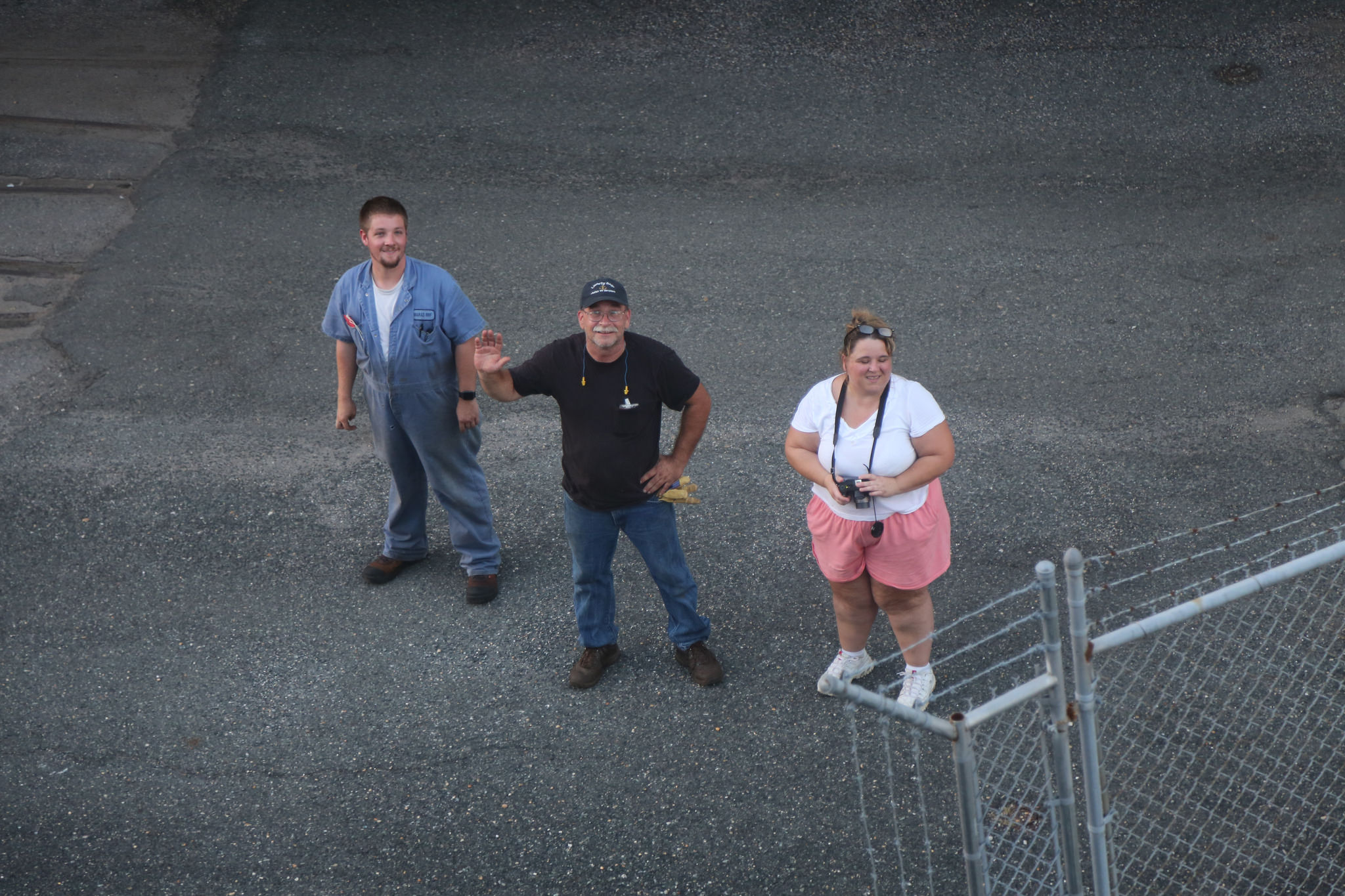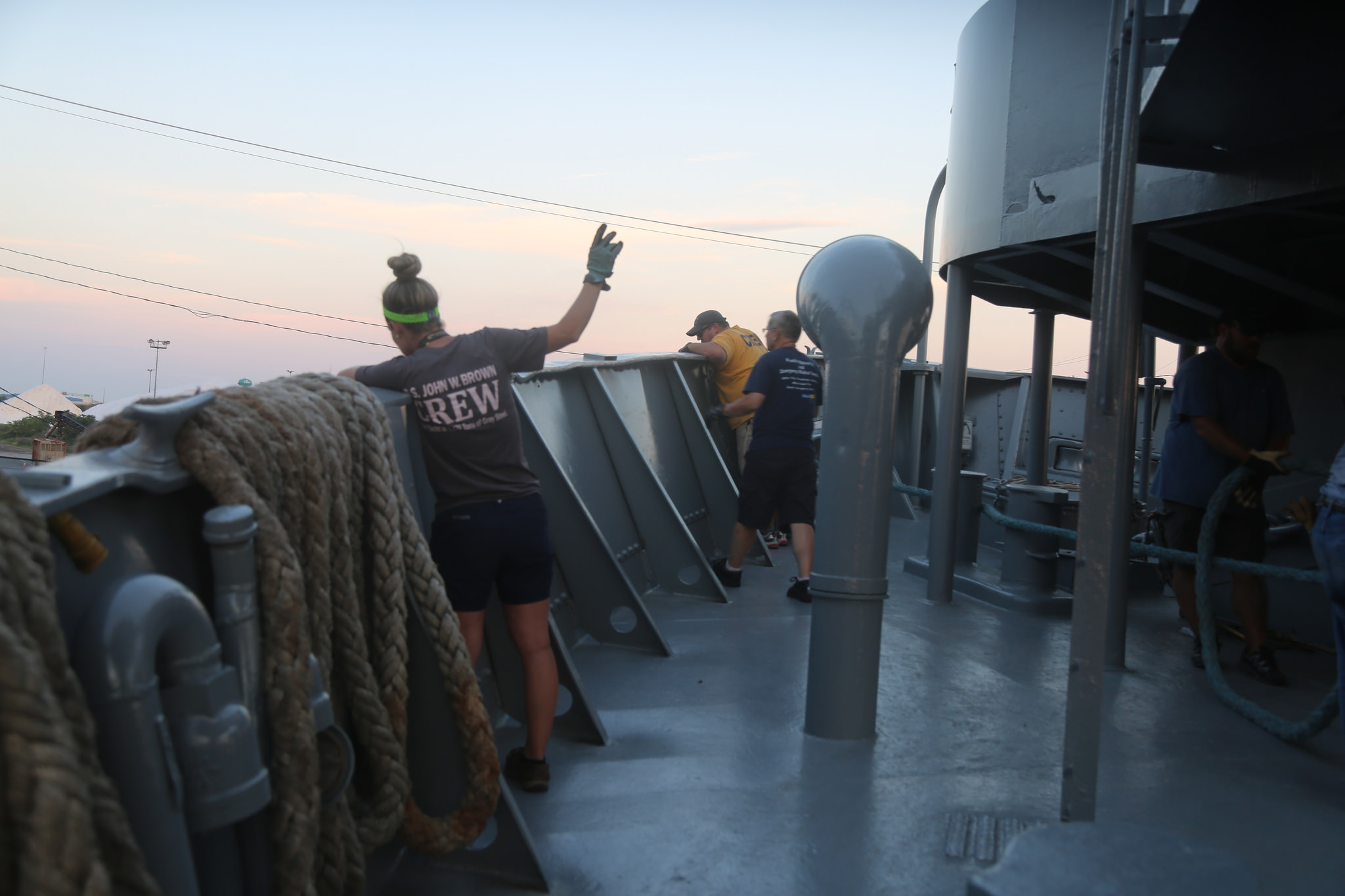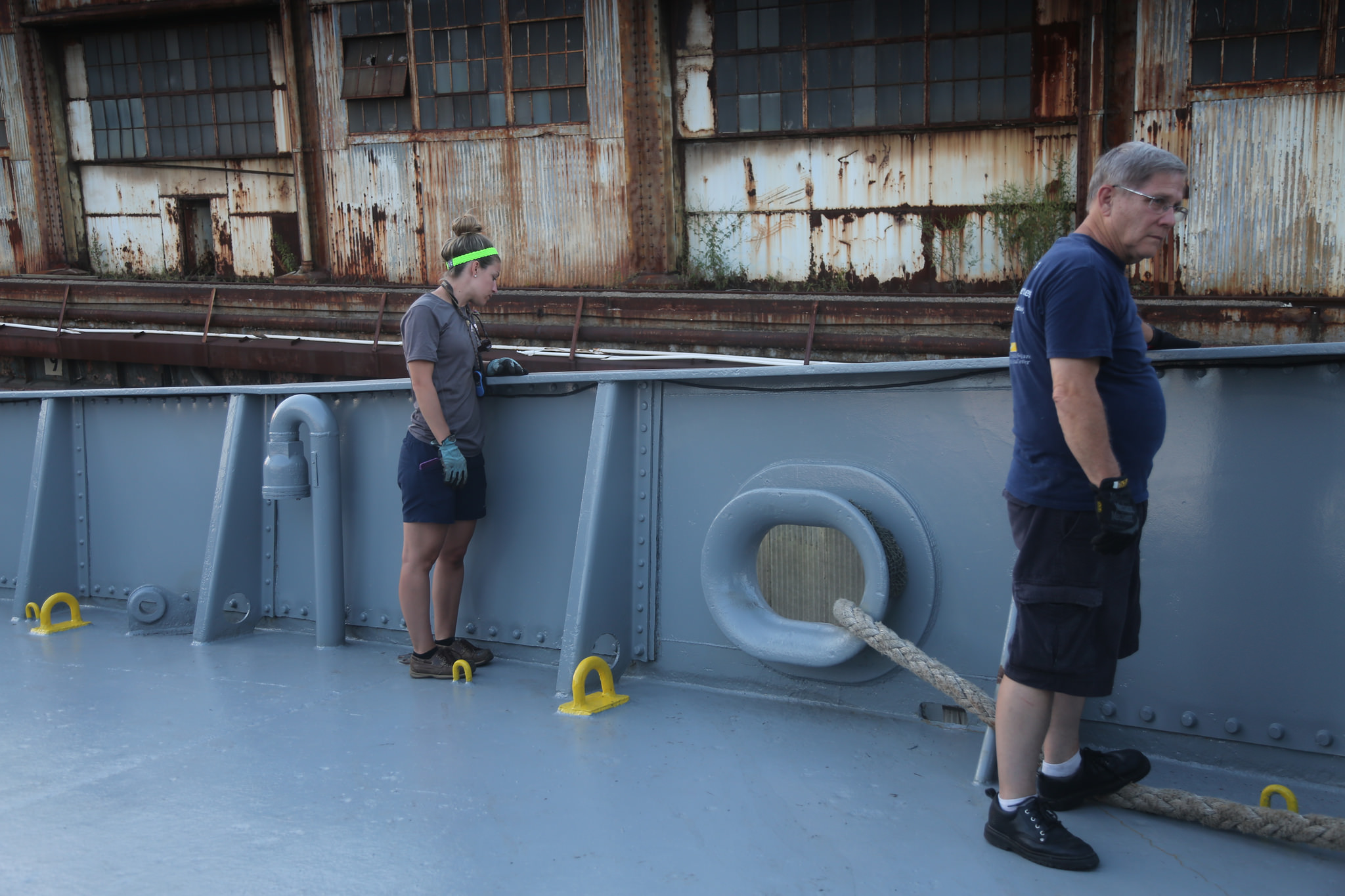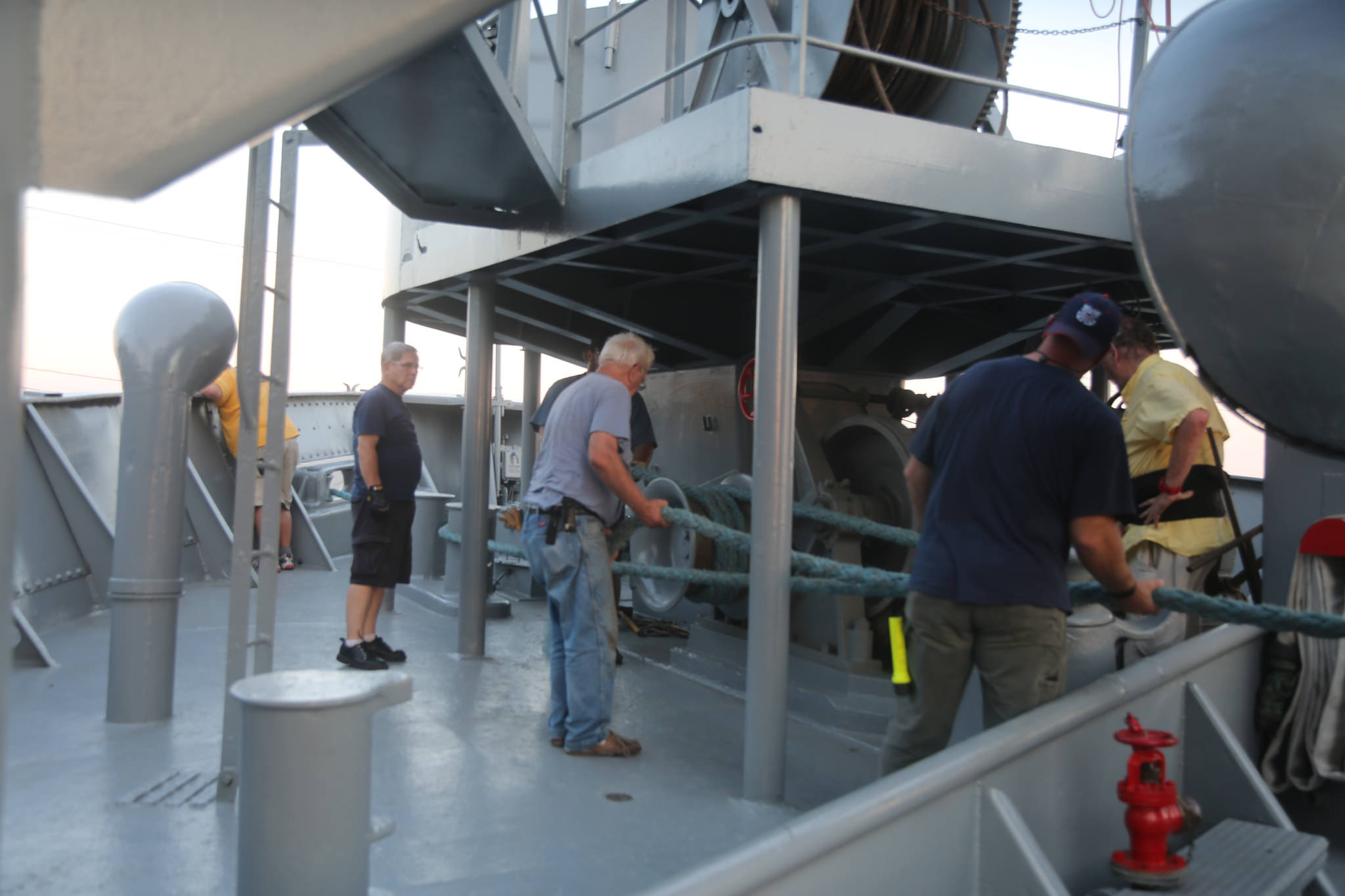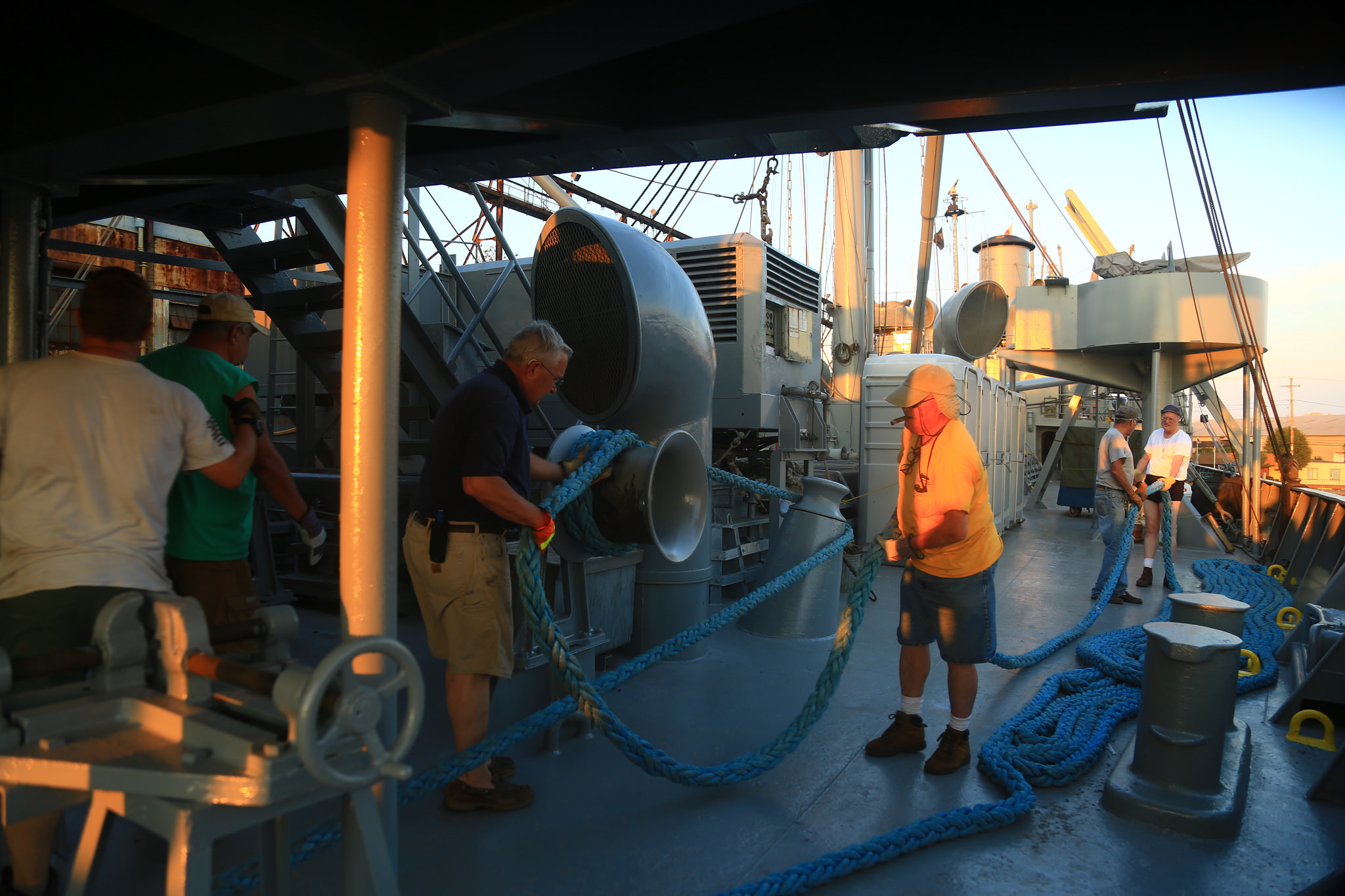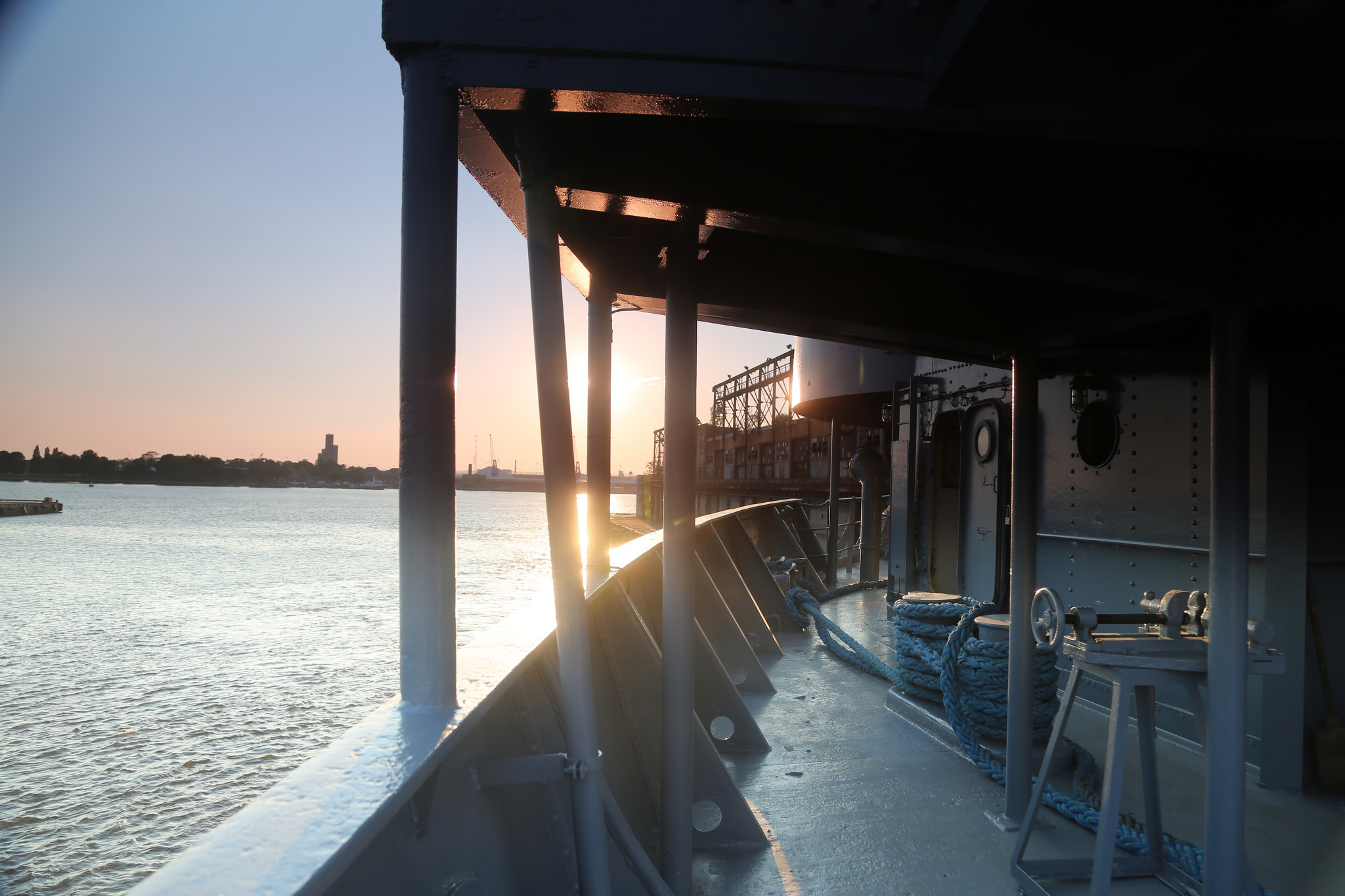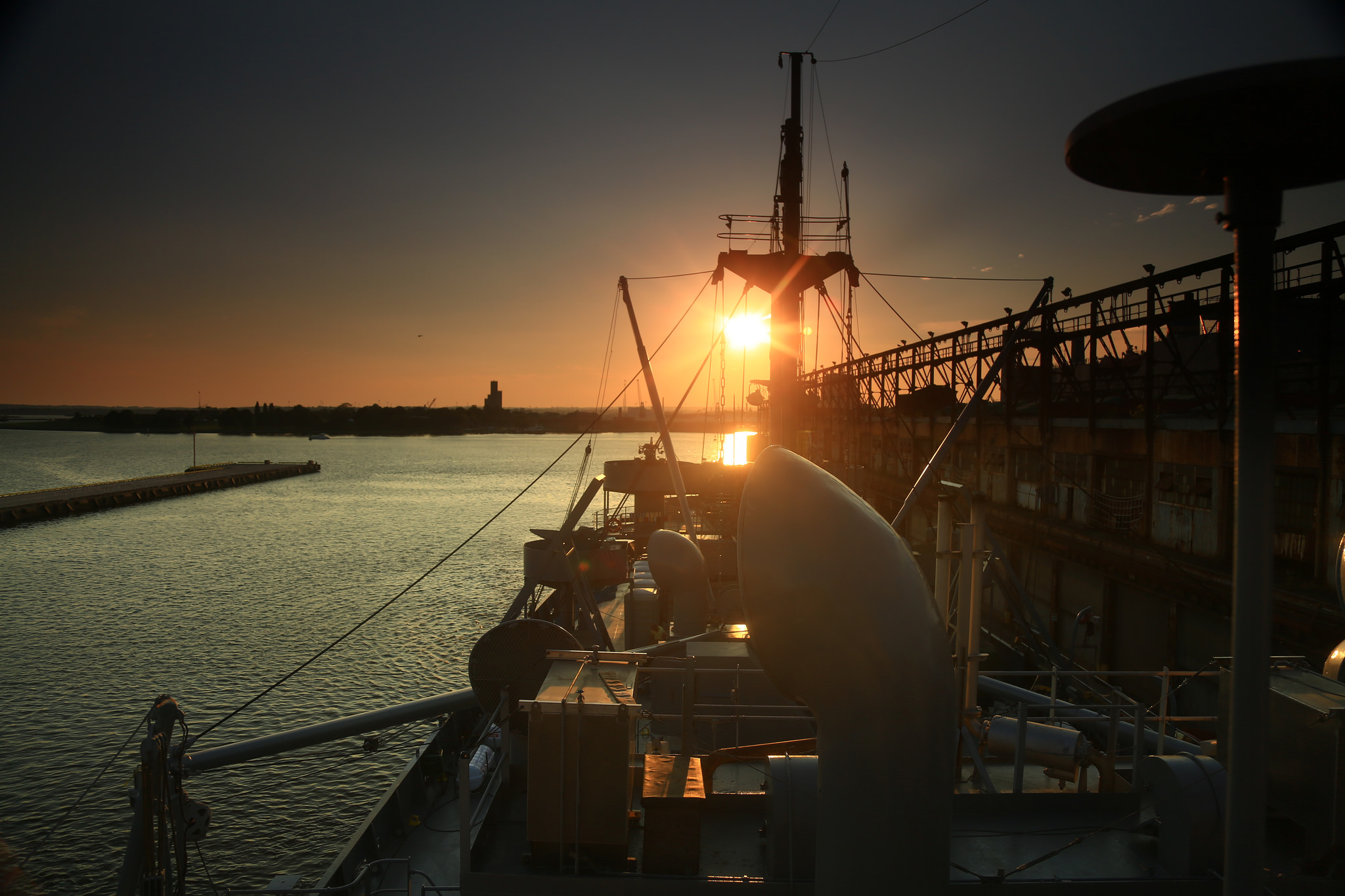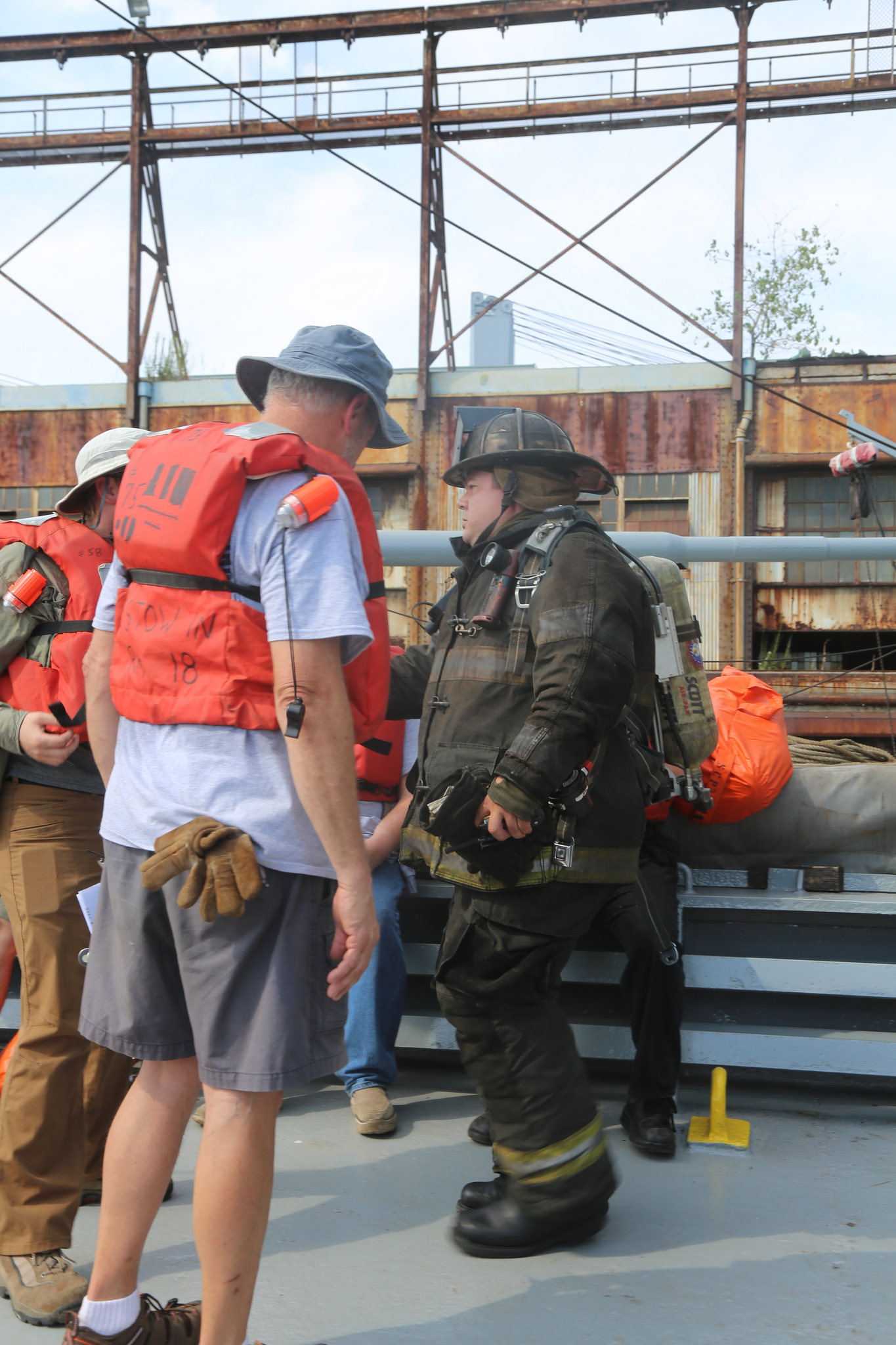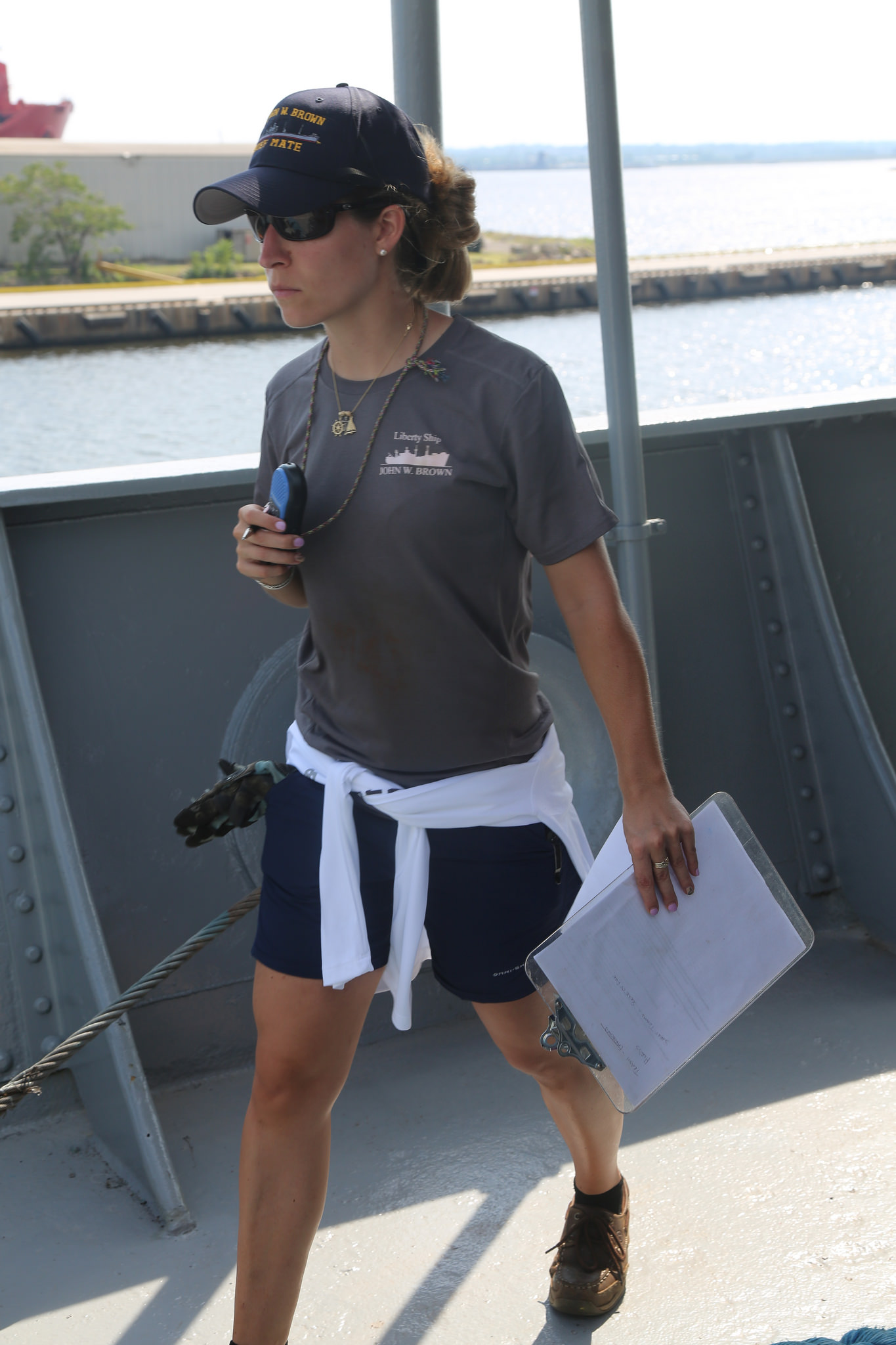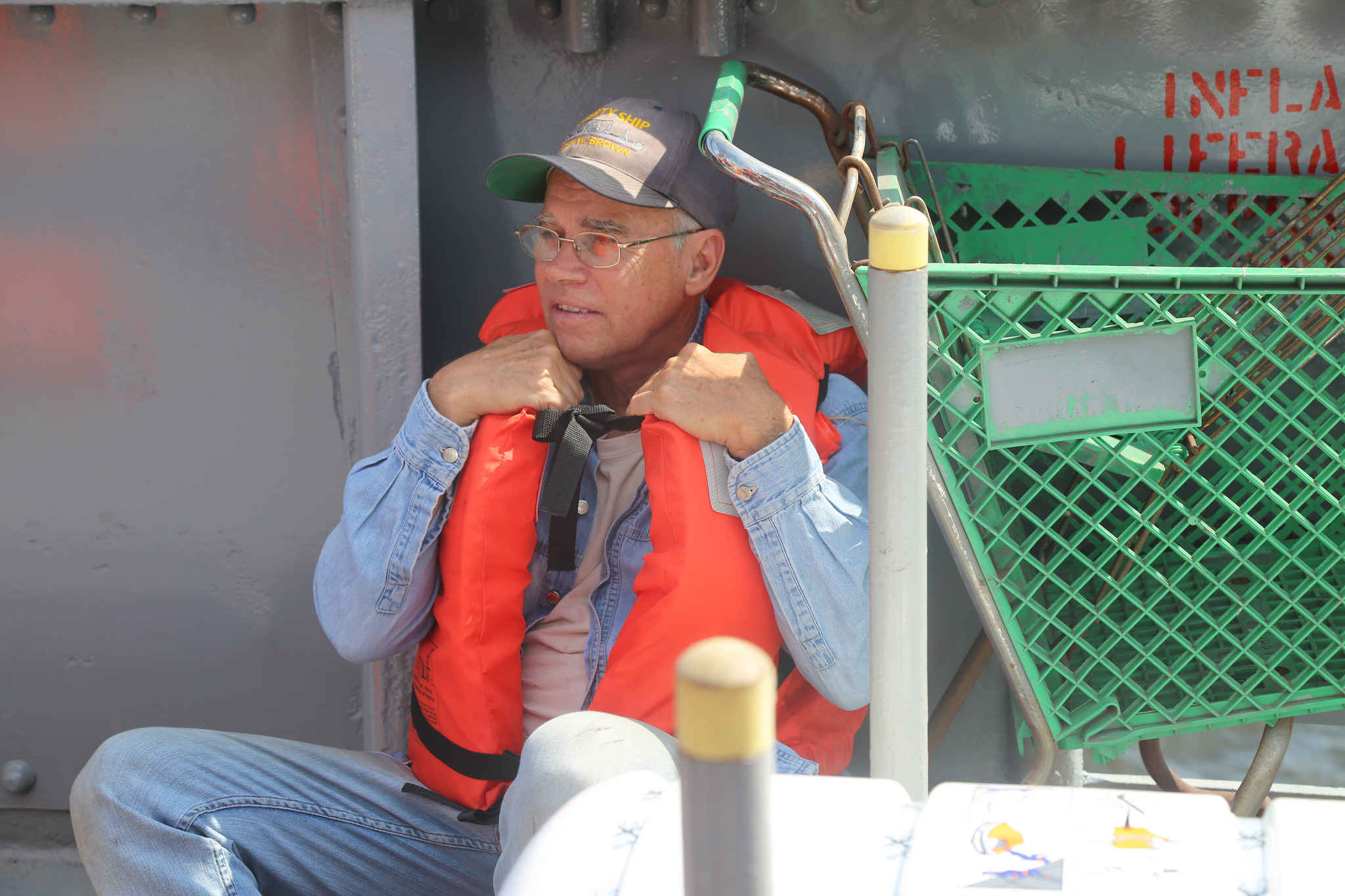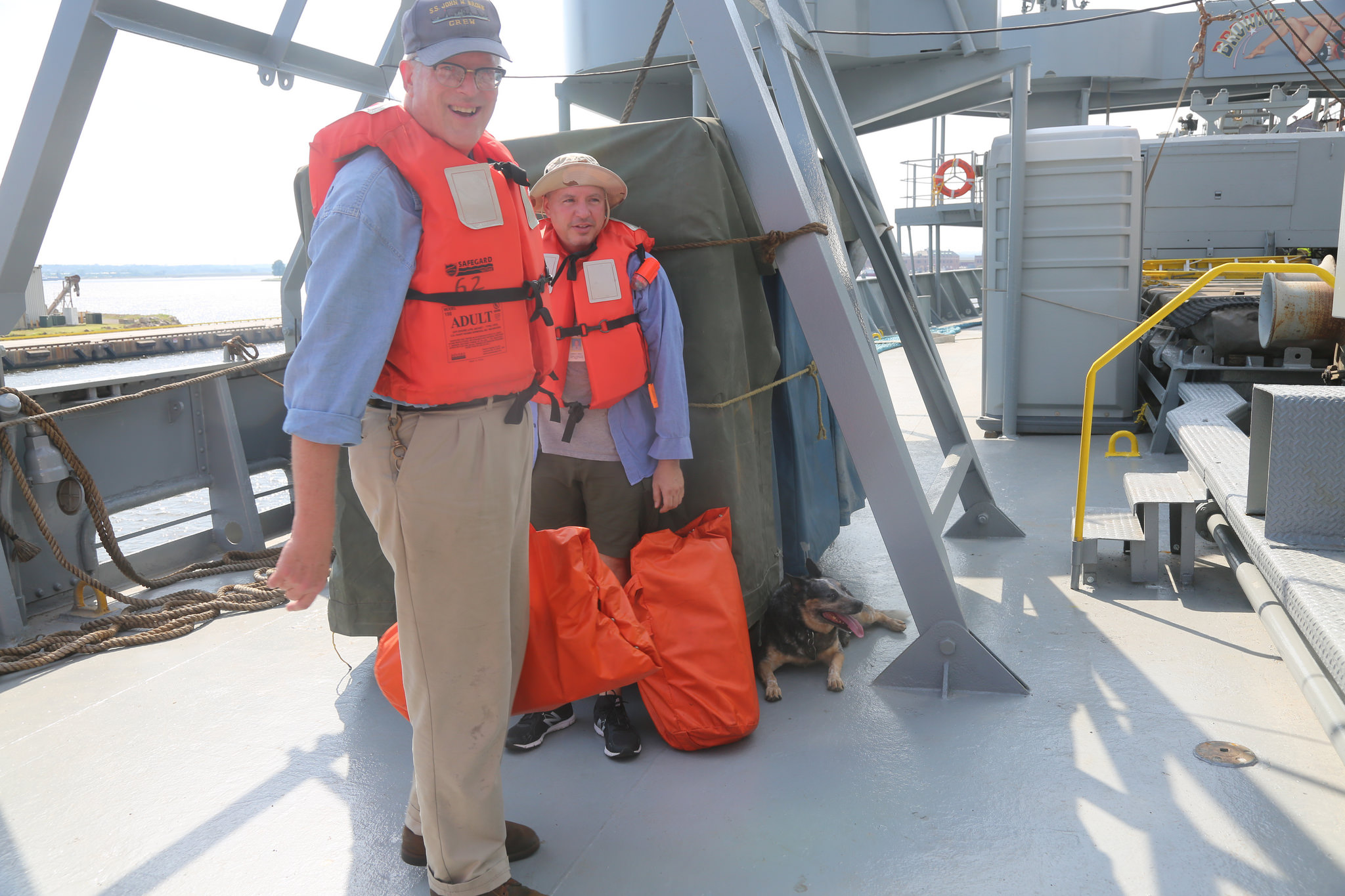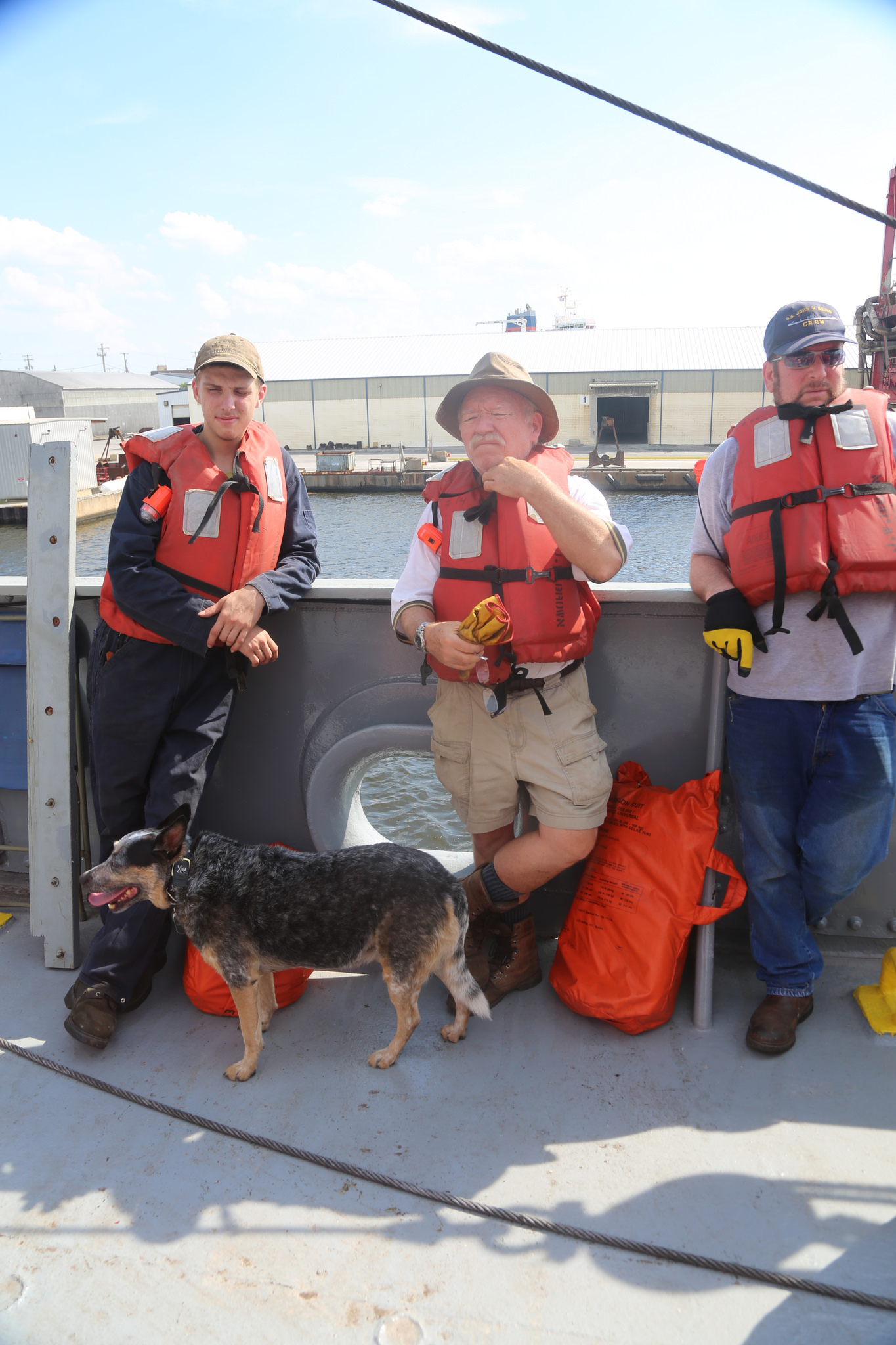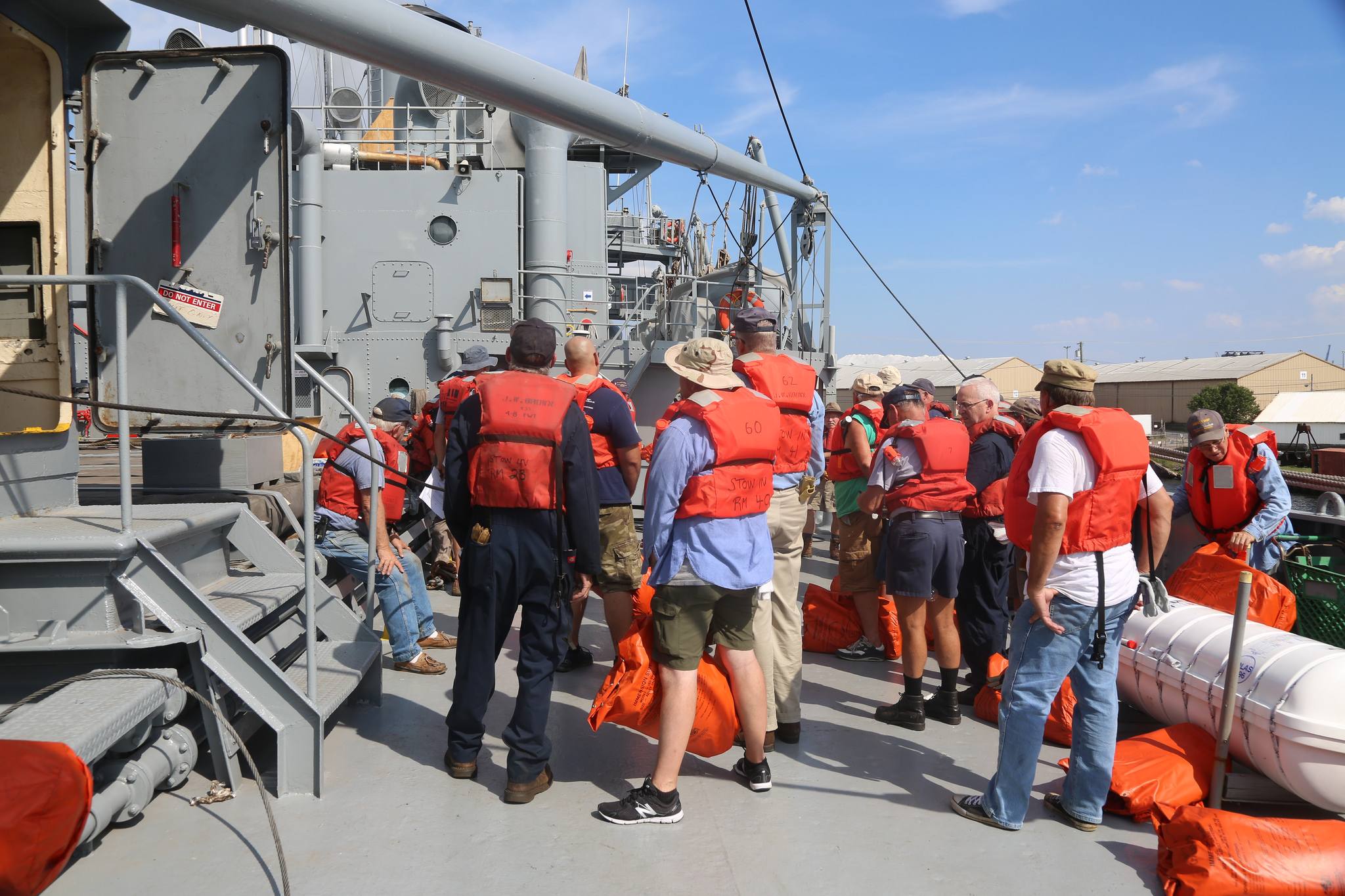The air show portion of the Living History Cruise is always a crowd favorite. The ship arrives at the Bay Bridge just after lunch has finished. Andy, who coordinates the planes for the air show, is on the Flying Bridge listening for the signal from the planes that they have arrived and are ready to commence the attack. Crew members have manned the guns and guests are ready with cameras and phones. The show will begin with a training flight. The planes fly close to the ship and the pilots like to wave to the guests on board. The next to arrive are more serious. Japanese planes fly in for an attack and the gunners answer with volleys of bullets. After several close passes the enemy planes are chased away by an TMB Avenger. She's a graceful lady in the air and once the danger has passed she'll fly by with her torpedo bay doors open showing off her fire power. Last, but not least, a B-25 Mitchell Bomber "Briefing Time" flies directly overhead. There is no mistaking the sound of the engines of this beauty.
The Stearman was a primary training plane during World War II. This plane comes to us from the St. Mary’s County Airport where you can take a ride over southern Maryland. I’m not sure the pilots would have been this friendly in 1944.
The white Val is actually a Vultee BT-13 Valiant that was converted for the Tora, Tora, Tora movie to look like a Val. The green "Zero" is a Russian Yak 52TW. The air show is spectacular to see from the ship and we're fortunate to have photographs taken from the air too.
You'll never be closer to the planes in an airshow than you are on the JOHN W BROWN. The sights and sounds of the planes are an experience you'll never forget.
Here is the Zero coming in for a dive bomb run.
She's the Boss is a WWII Grumman TBM Avenger torpedo bomber. She chases away the enemy planes and saves the day.
Briefing Time is a B-25 "Mitchell" Bomber that comes down for the air show from the Mid Atlantic Aviation Museum in Reading, PA. There is no mistaking the sound of this engine with any other aircraft. What a way to end the show!
Another image you won't see anywhere else but a Living History Cruise.
As you can see by comparing this photograph from a voyage of the JOHN W BROWN in 1944 with the photograph from one of the Living History Cruises we work hard to provide as authentic an experience as we can. There really is nothing else like it anywhere!
Project Liberty Ship, Inc is a 501(c)3 non-profit, all volunteer organization engaged in the preservation and operation of the historic ship JOHN W. BROWN as a living memorial museum. Gifts to Project Liberty Ship are tax deductible.
